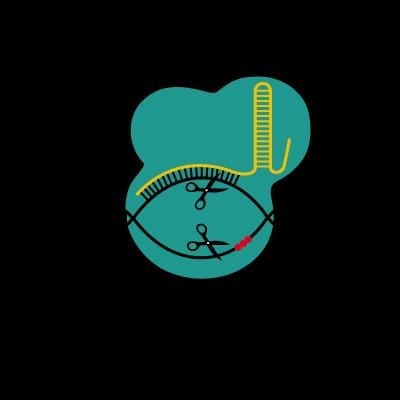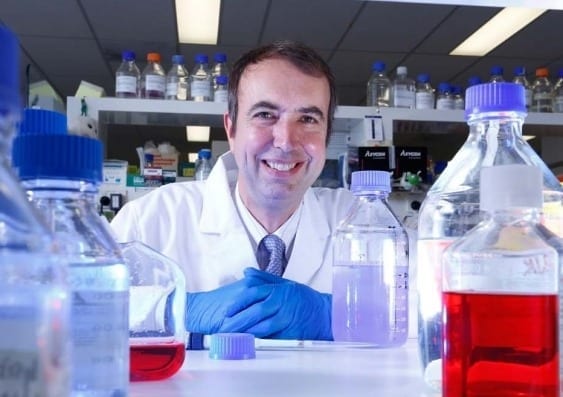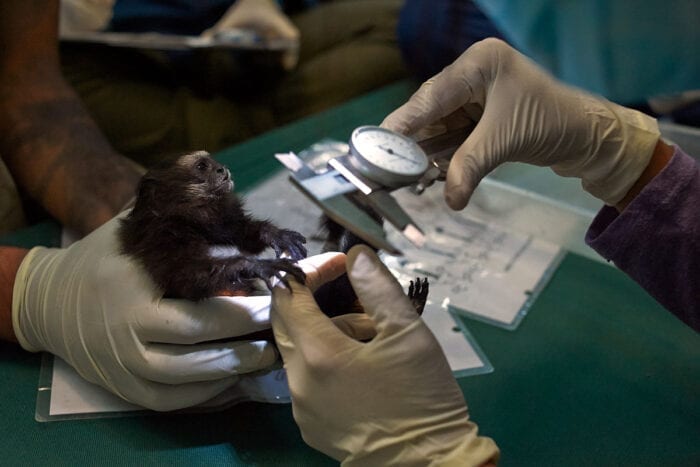
Mutating the enzyme at the heart of the CRISPR gene editing system can improve its fidelity.
CREDIT: DataBase Center for Life Science (DBCLS)
The CRISPR system is a powerful tool for the targeted editing of genomes, with significant therapeutic potential, but runs the risk of inappropriately editing “off-target” sites. However, a new study publishing July 9, 2020 in the open-access journal PLOS Biology by Feng Gu of Wenzhou Medical University, China, and colleagues, shows that mutating the enzyme at the heart of the CRISPR gene editing system can improve its fidelity. The results may provide a therapeutically safer strategy for gene editing than using the unmodified enzyme system.
The CRISPR system employs an enzyme called Cas9 to cleave DNA. Cas9 will cut almost any DNA sequence. Its specificity comes from its interaction with a “guide RNA” (gRNA) whose sequence allows it to bind with the target DNA through base-pair matching. Once it does, the enzyme is activated and the DNA is cut.
The CRISPR system is found in multiple bacterial species; among those commonly used in research, that from Staphylococcus aureus has the advantage of size–unlike some others, its gene is small enough to fit inside a versatile and harmless gene therapy vector called adeno-associated virus, making it attractive for therapeutic purposes.
A key limitation of any of the CRISPR systems, including that from S. aureus, is off-target cleavage of DNA. A guide RNA may bind weakly to a site whose sequence is a close but imperfect match; depending on how close the match is and how tightly the enzyme interacts with the paired gRNA-DNA complex, the enzyme may become activated and cut the DNA wrongly, with potentially harmful consequences.
To explore whether the S. aureus Cas9 could be modified to cleave with higher fidelity to the intended target, the authors generated a range of novel Cas9 mutants and tested their ability to discriminate against imperfect matches while retaining high activity at the intended site. They found one such mutant, which distinguished and rejected single base-pair mismatches between gRNA and DNA, regardless of the target, increasing the fidelity up to 93-fold over the original enzyme. They showed that the mutation affected part of the recognition domain, the region of the enzyme that coordinates contacts between the enzyme and the gRNA-DNA complex. The mutation had the likely effect of weakening those contacts, thus ensuring that only the strongest pairing–which would come from a perfect sequence match–would trigger enzyme activity.
“Avoidance of off-target cleavage is a crucial challenge for development of CRISPR for medical interventions, such as correcting genetic diseases or targeting cancer cells,” Gu said. “Our results point the way to developing potentially safer gene therapy strategies.”
The Latest Updates from Bing News & Google News
Go deeper with Bing News on:
CRISPR gene editing
- Moderna ends collaboration with CRISPR company Metagenomi, parts ways with gene editing chief
Moderna invested part of its vaccine windfall into a new gene-editing startup, Metagenomi. Now it's backing out.
- Invest In A Revolutionary Gene Therapy With CRISPR Therapeutics
CRISPR Therapeutics' Casgevy could generate significant shareholder value if proven to be successful. Learn why I am highly bullish on CRSP stock.
- Prime Medicine Gets FDA Okay for First Trial of Gene Editing Technique
The FDA has cleared a clinical trial of an ex vivo prime editing candidate in patients with a rare disease, Prime Medicine announced Monday. The technique taps CRISPR technology to rewrite defective ...
- CRISPR-Crafted Cuisine: How Genetic Engineering Is Changing What We Eat
Hacking the genome of fungi for smart foods of the future. With animal-free dairy products and convincing vegetarian meat substitutes already on the market, it’s easy to see how biotechnology can ...
- CRISPR-Cas Gene Editing Help Combat Antimicrobial Resistance
Despite rising global antimicrobial resistance (AMR), researchers highlight CRISPR/Cas systems' potential in antimicrobial agent development.
Go deeper with Google Headlines on:
CRISPR gene editing
[google_news title=”” keyword=”CRISPR gene editing” num_posts=”5″ blurb_length=”0″ show_thumb=”left”]
Go deeper with Bing News on:
CRISPR
- Here is What to Know Beyond Why CRISPR Therapeutics AG (CRSP) is a Trending Stock
CRISPR Therapeutics AG (CRSP) has recently been on Zacks.com's list of the most searched stocks. Therefore, you might want to consider some of the key factors that could influence the stock's ...
- How does CRISPR edit antimicrobial-resistant bacteria?
Research has recently been presented highlighting the role that CRISPR-Cas technology can play in tackling antimicrobial resistance.
- Invest In A Revolutionary Gene Therapy With CRISPR Therapeutics
CRISPR Therapeutics' Casgevy could generate significant shareholder value if proven to be successful. Learn why I am highly bullish on CRSP stock.
- CRISPR-Crafted Cuisine: How Genetic Engineering Is Changing What We Eat
Hacking the genome of fungi for smart foods of the future. With animal-free dairy products and convincing vegetarian meat substitutes already on the market, it’s easy to see how biotechnology can ...
- CRISPR-Cas Gene Editing Help Combat Antimicrobial Resistance
Despite rising global antimicrobial resistance (AMR), researchers highlight CRISPR/Cas systems' potential in antimicrobial agent development.
Go deeper with Google Headlines on:
CRISPR
[google_news title=”” keyword=”CRISPR” num_posts=”5″ blurb_length=”0″ show_thumb=”left”]










